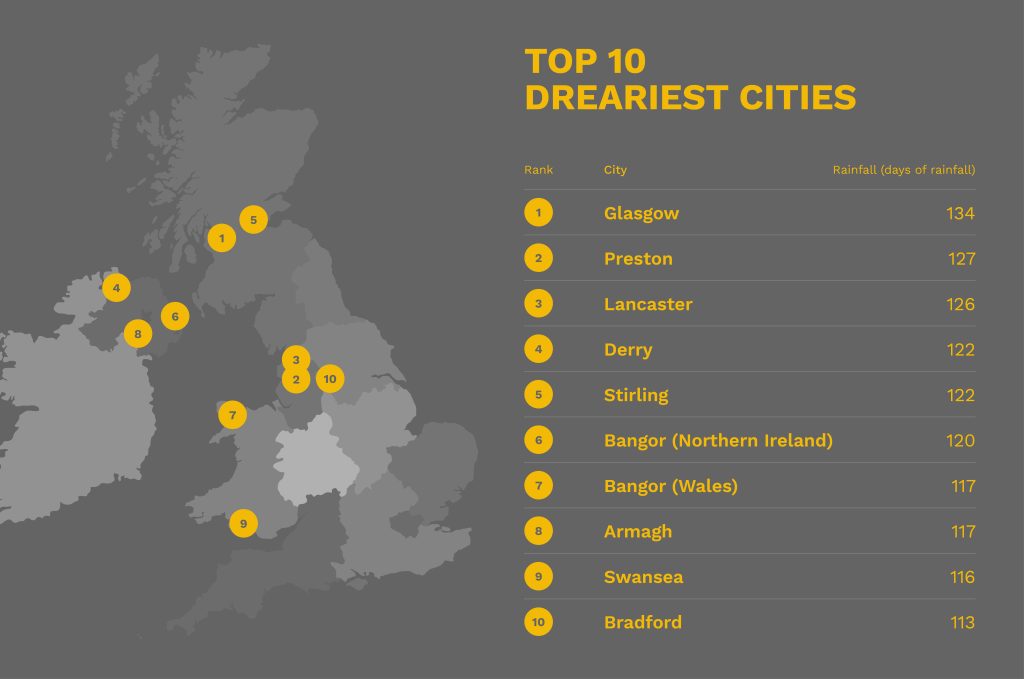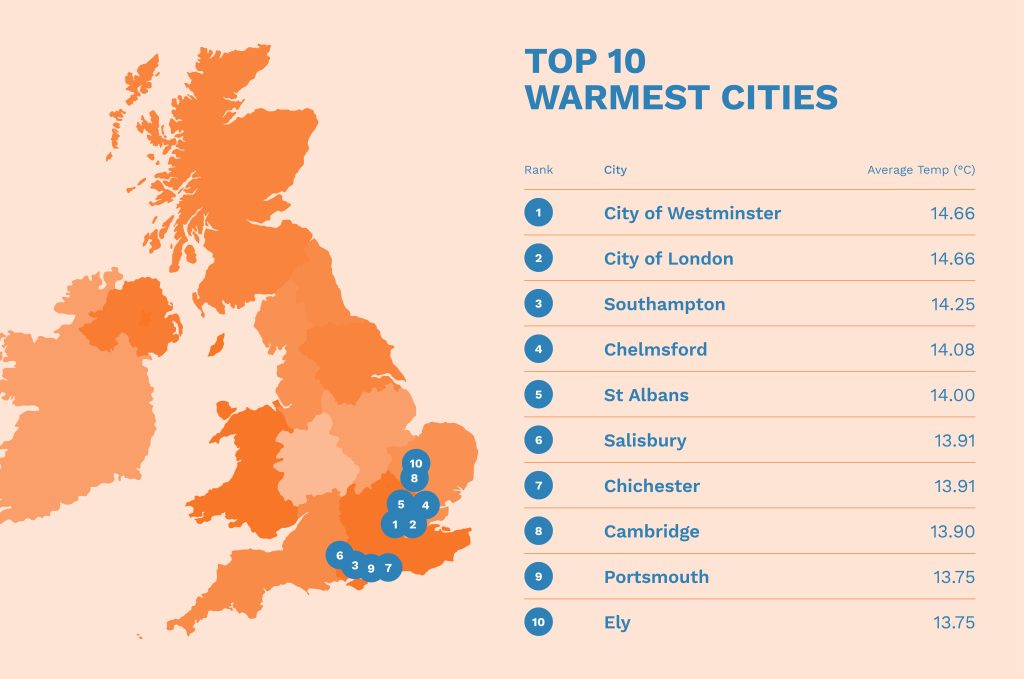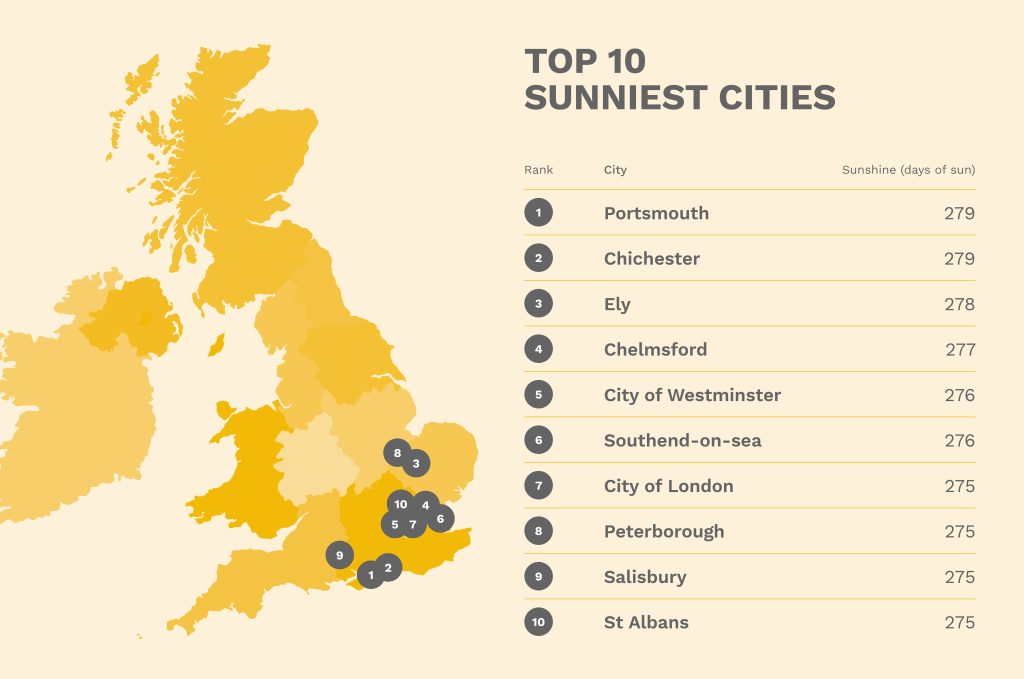The UK’s Dreariest Cities
The UK’s obsession with the weather is remarkable. It has become second nature for us to engage in weather-related discussions, seamlessly filling any awkward silences in social situations. In anticipation of these in-depth and analytical conversations about the sun, clouds, rain and wind, we will often summarise any slight change in weather conditions on a daily basis.
In the summer, we love to comment on how inconsiderately hot the sun is. (Perhaps too hot)
In winter, we love exaggerating the smallest snowflakes.
If we had to summarise the British weather in one word? Dreary. Because it’s mainly wet, overcast or bitterly cold. It’s fair to say that some places in the UK have it worse than others, meaning that some cities are more likely to benefit from our range of flood kits. We analysed typical dreary weather conditions in cities across England, Scotland, Wales and Northern Ireland, as well as highlighting the cities that receive the most sun!
So that begs the question, who are the worst offenders when it comes to dreary weather? And which city shines the most? Let’s see!
The UK’s Top 10 Dreariest Cities
If you’re heading to Glasgow anytime soon, you’d best take an umbrella. With the annual days of rainfall sitting at a miserable 134, it’s officially the UK’s wettest city. Preston takes second place with 127 days of rainfall, and Lancaster in a close third with 126.
It seems that the rain doesn’t discriminate based on which UK country you happen to live in. With England, Wales, Scotland and Northern Ireland all featuring two or more times in the top 10!
The UK’s Top 10 Coldest Cities
It probably won’t come as a surprise that the coldest cities are all in the north of the UK. Newry and Aberdeen take top spot, with an average day time temperature of 10.58°C. Perth features third on the list, with Stirling and Dunfermline following in joint fourth and fifth with 11.25°C. Unfortunately for anyone living way up North of the UK, 8 of the top 10 coldest cities are all based in Scotland, so if you’re visiting, (especially during winter) wrap up warm!
The UK’s Top 10 Warmest Cities
With an average daytime temperature of 14.66°C degrees, the City of Westminster and the City of London are the warmest cities in the UK. They’re closely followed by Southampton and Chelmsford. Every single city in the top ten is located in the south, so far south the majority of them lie on the very most-southern coast of the UK. So, it’s true what they say- it’s colder up north. (But you already knew that!)
The UK’s Top 10 Sunniest Cities
So, where does the sunshine the most in the UK? If you head to the cities of Portsmouth or Chichester, that’s where you’re likely to enjoy the most sunshine. These two south coast cities bask in an average of 279 days of sunshine a year, so if you’re ever visiting, you might need your shades. Ely took an honourable third place with 278 days of sun a year.
Remember, if you are living in an area that suffers from higher than average rainfall, it may be worth checking out our range of flood kits which can help you to protect your home or business. You can never be over-prepared when it comes to the unpredictable British weather.
Methodology
The data featured in this article is based on the most recent statistics from World Weather Online, which details the average measurements for various weather conditions in each month. Data from World Weather Online includes, but is not limited to average temperature, sunshine hours and days of rain.





